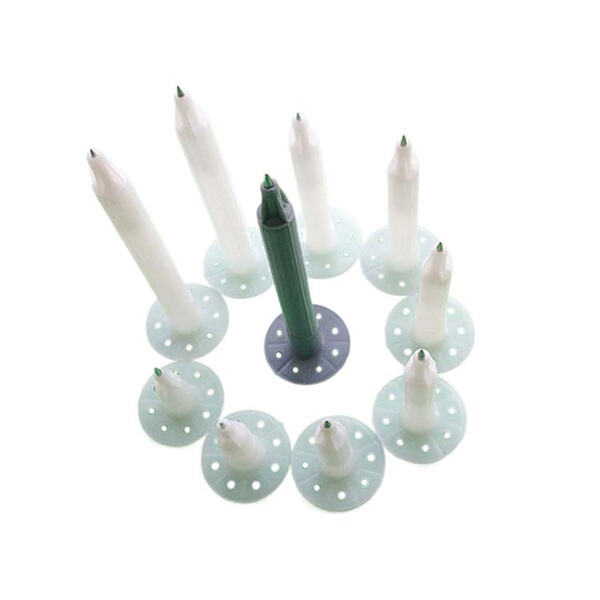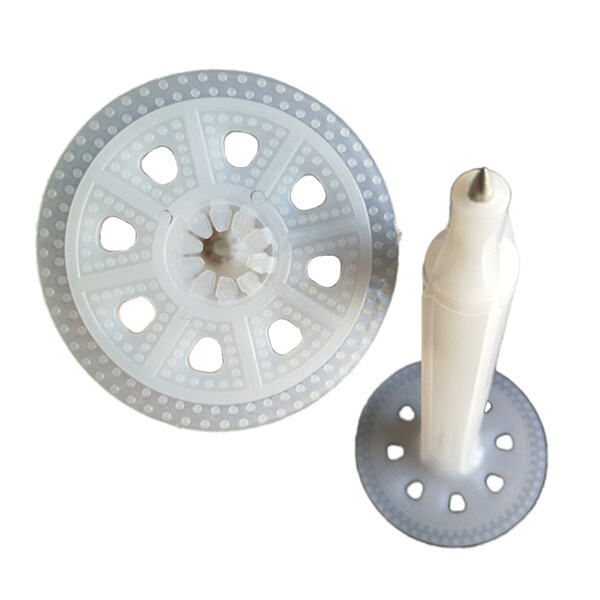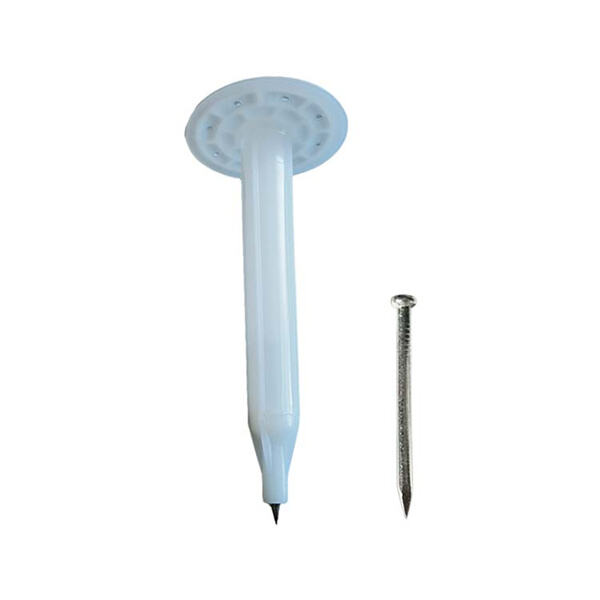Yifangin eristevakiokoot tarjoavat luotettavia ratkaisuja turvallisiin asennuksiin. Eri eristemateriaaleja varten suunnitellut koot varmistavat vahvan kiinnityksen kompromisoimatta lämmöneristystä. Korroosionkestävä rakenne takaan kestävyyden erilaisissa olosuhteissa. Helppo asentaa ja pitkäikäinen, vakiokoot estävät materiaalivauriot ja ylläpitävät eristyksen eheyttä. Luota Yifangiin laatukovien ratkaisuihin, jotka takaavat tasaiset tulokset.
Yifangin isoitusalusilat tarjoavat luotettavan kiinnityksen eristeisiin. Ne on suunniteltu helppoon asennukseen, ja ne pääsevät materiaalissa läpi sulavasti samalla kun varmistetaan turvallinen kiinnitys. Korroosionkestävä rakenne takaan kestävyyden erilaisissa olosuhteissa. Erikoisesti muotoillut päätydesignit estävät liian syvän tunkeutumisen ja materiaalin vaurioitumisen.

Yifang tarjoaa erikoistuneita isolointiankerrut sovitetut tarpeidesi mukaan. Valittaessa otetaan huomioon alustan tyyppi, eristeen paksuus ja ympäristöolosuhteet. Meidän korroosionkestävät ankkurit takaavat turvallisen kiinnityksen betoniin, tiiliin ja kuivaseinälevyihin. Ulkokäyttöön valitse säänkestävät versiot, jotka kestävät ankaria säätä.

Yifangin eristelevykiinnitysosa ovat keskeisessä roolissa rakennusten energiatehokkuuden parantamisessa. Ne kiinnittävät eristeen turvallisesti estäen samalla lämpösiltoja ja materiaalivaurioita. Korroosionkestävä suunnittelu takaan pitkäaikaisen toimivuuden erilaisissa ilmaston olosuhteissa. Oikeanlaisella eristevälityksellä kiinnikkeet optimoivat energiatehokkuuden ja rakenteellisen lujuuden.

Yifangin eritekiinnikkeiden oikea asennus takaan parhaan mahdollisen suorituskyvyn. Oikea sijoittaminen estää lämpösiltojen syntymistä ja ylläpitää eristeen tehokkuutta. Kiinnikkeemme on suunniteltu turvalliseen ja tasaiseen asennukseen, joka välttää materiaalin puristamista. Valmistajan ohjeiden noudattaminen säilyttää takuun voimassaolon ja pidentää tuotteen käyttöikää.
Langfang Yifang Plastic Co., Ltd. on saanut kansainväliset arvoituudet, kuten SGS:n ja TUV:n, varmistaakseen, että kaikki tuotteet täyttävät korkeimmat laadustandardit. Noudattamme tiukasti ISO9001:ää ja muita johtoppiirejä. Raaka-aineiden hankinnasta valmiiden tuotteiden toimitukseen asti jokainen vaihe kontrolloidaan tiukasti varmistaaksemme tuotteen luotettavuuden ja yhtenäisyyden.
Olemme tarjonneet laadukkaita palveluita yli 2 000:lle asiakkaalle, ja tuotteemme onnistuneesti vientiin yli 60 maahan ja alueeseen ympäri maailmaa. Riippumatonta kansainvälistä liiketoimintakokemusta ja erinomaista asiakaspalvelua ollen, olemme saaneet asiakkaidemme luottamuksen ja kiitoksen.
Tarjoamme ei vain standarditeotteita, vaan myös OEM- (alkuperäisen laitteistotuottajan) ja ODM-palveluita (alkuperäisen suunnittelutuottajan), jotka mahdollistavat erilaisten muovisten kiinnitysosien ja muiden muovisten tuotteiden mukauttamisen asiakkaiden tarpeisiin. Yritys on saanut yli 20 patentin ja jatkaa teknologisen kehityksen edistämistä varmistaakseen, että sen tuotteet pysyvät aina alan eturintamassa.
Langfang Yifang Plastic Co., Ltd. on ammattimainen muoviliitinteiden valmistaja, jolla on yli 15 vuoden valmistus- ja vientikokemus. Tehtaamme peittää alueen 6 800 neliötä metriä ja on varustettu 20 edistyksellisellä tuotantolinjalla, jonka päivittäinen tuotekapasiteetti on yli 50 000 kappaletta. Tarjoamme monipuolisen tuoterivin, mukaan lukien isolointipytkyt, isolointiukset, isolointiliitimet, muovilohkaliitimet, isolointituopit, Eifs-tuopit, muoviseinäuput, lentoliittimet, perheliittimet, perheliitinsarjat, muoviset kuivaseinäliitimet ja muoviset kuplat pykit erilaisten asiakkaiden tarpeiden täyttämiseksi.
Tekijänoikeudet © Langfang Yifang Plastic Co., Ltd. Kaikki oikeudet pidätetään | Tietosuojakäytäntö|Blogi